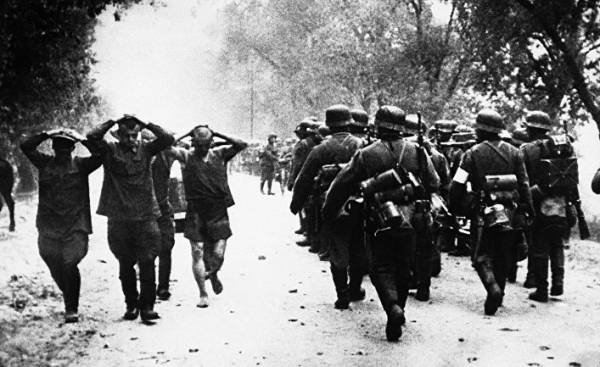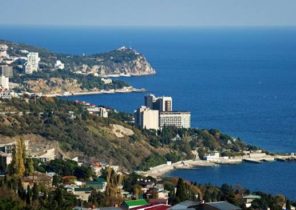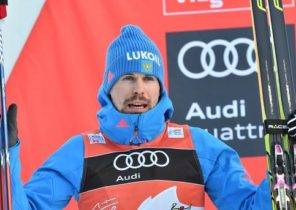
The cemetery Girdle blowing in the wind and the rain. In a little more than half an hour’s drive North-West of Bergen stands a monument to Ivan Vasilyevich Rodichev. Someone came here with a wreath and a candle.
It is as yet unknown story about how a young man from a village in the South of the Soviet Union came to a tiny Norwegian island with only one house. And how he died.
The story tells about the terrible routine of 3% of the Norwegian population in the mid-forties and Soviet prisoners of war.
After more than 70 years after the Second world war more building blocks fall into place. Who was this Ivan? And almost 100 of thousands of other Soviet prisoners of war who built the Northern railway, the E6 highway and a new airfield the Germans in the West of Norway?
The Nazis called them “Untermenschen” (subhuman). They had no human rights, they were barely fit to be slaves.
Only the strongest survive during transport from the Eastern front on slave labor in the Norwegian towns and villages.
13.7 thousand Soviet prisoners of war died on Norwegian soil or at the time of the shipwreck the Norwegian coast during the Second world war. Almost 6 thousand of them still not identified.
For comparison: on land and at sea have killed more than 10,2 thousand Norwegians.
Prisoners of war were killed by hard work and malnutrition. The story of Ivan, who was a little more than 20 years, is somewhat different.
Camps on the Eastern front
On 22 June 1941, Germany attacked the Soviet Union. It was the largest military conflict in world history. And a longer than expected Adolf Hitler (Adolf Hitler).
During the first months after June 1941, the Germans captured over two million Soviet people, but the Germans had no plans in regard to these prisoners.
The prisoners were kept under the open sky in barbed wire on the large fields at the front line. Thousands of those who were not killed as Jews and Communists, died of disease and hunger. By the end of 1941 every day died about 5 thousand Soviet prisoners of war.
Hitler planned to use the entire Soviet Union. Communism was the main enemy of Germany in the thirties. Now it was necessary to displace the civilian population in its place had come the Germans.
The story of Ivan rodicheva began with his birth in the Soviet Union in 1920. In civilian life he worked as a driver. He was an Orthodox. His father’s name was Basil. This information is contained in his prisoner of war card on the page with the Russian text.
In addition, we do not have almost any information about Ivan. Prisoner of war card is the only document that might have something to share about his short life, cut short on Norwegian soil.
Hitler thought that the war in the East will end in a few months, but this did not happen. The dictator of the Soviet Union Joseph Stalin was not ready for war, and he didn’t have enough weapons. But Stalin had enough people. When the Germans killed anyone or taken prisoner, their place on the battlefield constantly out of the new Soviet soldiers.
Soon Germany had problems. She needed a labor force for the factories and harvest in agriculture, but the young Germans had to continue the war on the Eastern front.
Therefore, Hitler decided that prisoners of war should be used as workers.
Transportation of prisoners of war in Norway
In the Central archive of the Ministry of defence of the Russian Federation in 1946 was recorded some information about Ivan Vasilevich Rodichev. He was born in the village of Bykovka M. Balakovo district of Saratov region. His mother’s name was Ekaterina Andreevna rodicheva.
She lived in this village, when the son was sent to war.
8 December 1943, Ivan, senior Sergeant of the 2nd infantry battalion 3rd motorized infantry guards division, was captured in Raspberries in Poland.
The Soviet prisoners of war there were two serious problems that made their lives unbearable and hopeless.
The Geneva Convention of 1929 established the international rules for prisoners of war, but the Soviet Union had not signed the Convention. This benefited the Nazis. They believed that these prisoners had no rights, and abused, starved them to death.
In addition, there were introduced the law under which the capture was punishable. Stalin’s order was that the last bullet in the rifle was intended for the soldier.
The largest number of prisoners of war in Norway
Growth Ivan was 174 cm, he had dark hair. He was healthy when he was captured. The pow card has fingerprints, but no photo.
On the second page of this card says that he was sent to pow camp Stalag VIII-C. He was in Sagana in Germany (in Żagań in Poland). There he was given the pow number is 81999. 12 February 1944 he was sent to the Assembly camp Stalag II-B at Stettin in Germany. Now this city is called Szczecin and is located in Poland.
Gradually the number of prisoners in Norway has become the largest in Europe relative to population. At this time the population of Norway was about three million, of which more than 95 thousand were Soviet prisoners of war. The Nazis were sent to forced labor in Norway not only POWs, but also civilians from many other countries.
All Soviet prisoners of war arrived in Norway in cargo ships from Stettin on the Baltic sea. Most healthy men were herded on Board like cattle, they were beaten to the failure of cargo holds with no toilets. Not all survived to the final destination.
“If someone died, didn’t care of the Nazis. Because there were so many prisoners,” says the historian Michael Stokke (Stokke Michael).
A researcher from Narviksenteret trying to gather as much information about each prisoner of war in Norway.
Currently identified about 8 thousand people from 13.7 per thousand Soviet prisoners of war.
Most POWs from the Eastern front were delivered to Norway in August 1941. This was even before Hitler gave the order to use soldiers as hard work. Each of the first four transports brought in 800 people. The Germans needed labor for snow removal services in Northern Norway. This heavy manual work performed by prisoners.
Gradually the prisoners began to build defense facilities, airfields, railroad and highway on Norwegian soil. One of the roads was route 50, which is now called the E6. Prisoners was a very important labor force for the Germans, at the same time, they were considered “subhuman”, had no value.
Two-thirds of all Soviet people in Norway were in Northern Norway. Only for the construction of the Northern railway took 25 thousand Soviet prisoners.
Airfield “Fortress Girdle”
March 22, 1944 Ivan Rodichev arrived in Stalag 303 on Artadmin under Lillehammer. All prisoners of war in southern Norway belonged to the main camp. Here they are distributed and sent forth in heavy servile work.
A few weeks later he was sent to a labor battalion of prisoners of war 188, located in Bergen. Three days later, he began working in the working team of prisoners of war Girdle.
“Only two months later he died. It was a short stay in captivity,” says Michael Stokke.
No one knows what work was done by Ivan, because the island Girdle was a closed military zone. Here the Germans were part of all three branches of the armed forces of the Luftwaffe had its own airfield, the Wehrmacht (the army) is a coastal Fort, and the Kriegsmarine (Navy) served torpedo battery.
“Everywhere you turned here on the island, almost everywhere you can see traces of war. This huge structure, positions, bunkers, quarries and tunnels,” says Gunnar Furre (Gunnar Furre).
He heads the Museum of Girdle and talks about how the Nazis were in a hurry to turn the flat areas on the Girdle at the main airport in the Eastern part of Norway. They were able to plan quickly.
At this time Norway had no airfields between Stavanger and Trondheim. There was an urgent need to build the airfield to cover from attacks allied shipping along the coast, to monitor the arrival of vessels in Bergen and protect the coastline.
“The girdle was completely closed to civilians, so we don’t know that there were prisoners. The Girdle was about 1.5-2 thousand people, including prisoners of war, but we don’t know exactly,” says Gunnar Furre.
The Germans also built a coastal Fort at Gavilan to the North of the Girdle with the four artillery positions. At the end of the war was completed torpedo battery “Elite”, located in the same area.
150 Soviet prisoners of war lived in Gardelegen on the island Girdle. Ivan was placed in a barrack with about 80 other prisoners in a small nearby islet of Malta.
There lived a woman who still remembers the rumors about Hitler. She also recalls and the ensuing chaos. And yet — when he took Ivan.
The inhuman conditions in the camps
When POWs arrived in Girdle, the airport in General was already built by the Organization Todt (OT). This paramilitary construction organization signed contracts with private construction companies, in addition, she was attached construction battalions prisoners of war numbering up to 3 thousand people.
In Norway, it was 15-20 of these construction battalions. And 103 of the camp. The Wehrmacht was determined how much food the prisoners were to receive, how much they needed clothing, and was responsible for the accommodation in barracks and construction sites.
Liability dissipated. When prisoners died, these organizations have shifted responsibility on each other. Who was to blame for their death? If this ever happened due to poor conditions in barracks or they lacked food?
“The Germans had a special concept in the cards of prisoners of war, they had something called “General physical weakness.” It is not a diagnosis, it simply means that the body is worn out. Prisoners of war died from exhaustion,” says Michael Stokke.
On Soviet POWs in Norway were the clothes in which they were captured, they would wear it during the whole captivity. With the hard work in any weather, the clothes quickly came into disrepair. In winter it happened that they had taken the shoes so they run away. Then they had only wooden shoes that were given to them by the Germans. So they don’t fall down, they were tied to the legs of the cement bags and wire.
“The prisoners worked all day, moving heavy shovels of gravel and sand. They have not had the opportunity to warm up and dry their clothes at night after a long rainy day. Usually in the room with the furnace was 30 people. The next day they again had to go to work in wet clothes.
A ten-working day lasted from 07.00 to 17.00. Prisoners was a half-hour break without food in the middle of the day.
Food was given in the evening. Usually it was a soup with cabbage, some potatoes and maybe some meat. In some camps called flower soup, other soup of barbed wire. This soup had a lot of different names and little nutritional value.
They were also given some bread, which they tried to save some for the next morning. German soldiers often took away the oil, which were given to the bread, and if you have no such important things like oil, then you have to start serious malnutrition,” says Stokke.
Shanty life on the island Malta
Every morning at seven o’clock from Monday to Saturday Ivan rodicheva along with all the others brought by boat from Malta to work in the Girdle.
Sunday was the weekend.
“Then from the highest hills of the island Malta raced a beautiful Russian song. It was so beautiful,” says one of their residents Mita, who lived here for more than 70 years.
The older woman doesn’t want to be called her name, but her story indicates that approximately 80 prisoners on the island were little better than prisoners in other places.
Young men in the barracks at the pier made a great impression on the Norwegian family that lived on the island in the house on the hill. The youngest prisoner was 17 years old.
“He showed us a photo of his sister, but I didn’t know whether she’s alive or not. And then he started to cry. His parents had died. I felt sorry for the cute boy.”
Prisoners on Malta was quite free mode. Some helped carry water when she washed clothes. And the prisoners who worked in the kitchen, could come to the family who lived upstairs at Midday to sharpen kitchen knives.
Family on Malta lived by fishing, and almost all the men were in the sea.
“The prisoners were normal people, but we never went down to the pier alone. We always went out two by two,” says the woman.
“I remember us on the boat sent potatoes. We were unable to carry from the pier all at once, and the next day there was nothing there. They hid the potatoes under clothing, but basically nothing bad ever happened.”
Prisoners found crabs in the coastal stones and boiled them in small cans. “They never complained,” says the woman.
But they were hungry. Here, their daily diet consisted of soup and bread.
“They had one extra shirt, which they often wore in their free time. Shoes were bad, but many prisoners have received from us knitted socks. It was a great joy for them.”
On this small island there was a closer relationship between prisoners and Norwegians than usual in other places. Historian Michael Stokke believes that this was because it was difficult to run from island to island, and that the German guards, in General, did not touch the prisoners.
“Many German guards did not want to the Eastern front. Those who were sent to guard the prisoners in Norway, was my job, and pretty well treated prisoners. But not too good, because in this case they could be punished and sent to the Eastern front. It was necessary to sustain middle-distance,” explains Stokke.
Myths about those who survived
Many of the 84 million Soviet prisoners of war, survivors of the war in Norway, was afraid to return home. They were afraid of punishment Stalin.
In the myths of the cold war talked about the fact that most were executed after his return home, but later it turned out that it wasn’t true.
The cold war between East and West began in 1947, mainly was then interrupted all contacts, and this continued until the fall of the Berlin wall in 1989. After 1990 it has become easier to access Russian archives.
“Actually, in those terrible camps for the Soviet prisoners got fewer people than was generally assumed. Once there were those who in any way were in the service of the Germans. As interpreters or actively helped the Germans. Many prisoners were able to return home. Some continued to serve in the army, others had to work for two years on the rebuilding of society before heading home. That is, their situation was much better than we thought. Not all were shot, some say. Of their business after the war went much better than we thought,” says Stokke.
Rumors about Hitler’s death
By the evening of Saturday 22 July 1944, at Midday was partly Sunny and almost no wind.
The temperature was almost 20 degrees when the boat German officer Hans Richard Kuster (Hans Richard Küster) and his team moored to the dock. Kuster was the commander of the 2nd company, 18th battalion of the Wehrmacht in Bergen.
On the island immediately started a commotion. On orders all the prisoners were removed from the barracks. From the attic window of the main house women of a family, Mita watched drama. Germans living on the island, ordered that the children didn’t leave the house. It was impossible for them to see it.
“There arose a terrible cry. These healthy men arriving by boat, ordered, yelled and threatened to shoot”.
Ivan Rodichev left in the output Meta shirt
He sat on the boat of Kuster with his hands on his head. Before him stood a German soldier with a bayonet aimed at the chest of the Ivan. Four other prisoners were allotted in exactly the same way. It was the last day of Ivan rodicheva.
Two days before that, the officers of the Wehrmacht in Germany tried to carry out a coup against Hitler. The bomb exploded in one of the main headquarters of the German leadership, but Hitler received only a small wound.
However, the rumors about Hitler’s death, however, was spreading. Came to Malta and Girdle.
“Rumors had spread everywhere among Norwegians and among the prisoners, because they knew nothing. They just heard something and it was totally distorted. Troops reportedly went there or there was peace, and then the Nazis had to surrender. The rumors were absolutely wild,” says Stokke.
The prisoners refused to work, because Hitler died
Late in the evening of 22 July, the boat of Kuester returned with three of the five prisoners.
“Those who never returned, were probably those two, who campaigned most of all,” says Michael Stokke.
No one knows where lie the dead Ivan Rodichev and Peter G. Nikolaev. About Nikolaev we know little — only that he was a private in 1916 of a birth, probably, from Novosibirsk.
“I will not rest until I find his card prisoner of war,” says Stokke.
Historian and researcher, he continues to receive treatment from the descendants and family members who want to know where in Norway are buried their home.
“Here a few weeks ago I was contacted by one Russian who is looking for his grandfather, missing”.
After the war, were rumors that John and Peter were shot by the German team of guards in Girdle from the Church wall.
After Osvobozhdeniye prisoners demanded to find the bodies to bury them properly, and the Germans were sent to dig and search. To no avail.
On the commemorative stone installed on Girdle countrymen Soviet prisoners of war, it is written: “Here lie two Russian soldiers executed by German Nazis 22.6.1944” (as in the original article — ed. ed.).
A memorial stone was installed outside the Church cemetery, but later moved to a cemetery. At the entrance to the Church.
Hans Richard Kuster and nine others were after the war accused of executions on the Girdle. Kuster died in captivity in East Germany in 1946.







